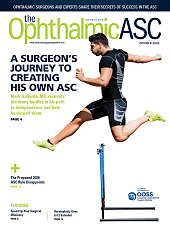Annexon, Inc. presented data for its late-stage targeted therapy for GBS and showcased new disease education activities at the AAN Annual Meeting in San Diego. An oral presentation during the “Clinical Trials Plenary” session featured results of the tanruprubart (formerly ANX005) phase 3 placebo-controlled trial reinforcing its rapid and durable clinical benefits for patients with Guillain-Barré Syndrome (GBS), the company said in a press release. A replay of the session is available to AAN registrants.
According to the company, Tanruprubart is a first-in-kind monoclonal antibody designed to block C1q, the initiating molecule of the classical complement cascade. With a single infusion, tanruprubart halts ongoing neuroinflammation and nerve damage in the acute phase of GBS to improve and expedite overall recovery.
"After decades without any advancement in treatment or care, there is an urgent need for therapies that work quickly and effectively to treat GBS. Tanruprubart is an exciting and novel therapy that has shown a rapid and durable biological effect that shuts down neuroinflammation and nerve damage, potentially stopping the disease in its tracks,” said Jeff Allen, MD, professor of Neurology, University of Minnesota, in the press release. “The results of this phase 3 placebo-controlled study, combined with a real-world study of GBS patients treated with standard therapies underscores the benefits of rapidly blocking neuroinflammation. Tanruprubart has the potential to help patients get better faster and ultimately reach a better state of health than with existing therapies or without treatment, while significantly reducing the burden of care."
In the phase 3 pivotal trial of 241 patients, tanruprubart met the primary endpoint with consistent outcomes and rapid, more complete functional recovery vs placebo across multiple time points and clinical efficacy measures. The primary endpoint, GBS-Disability Scale (DS), showed that after a single infusion of tanruprubart at 30 mg/kg dose, patients had a statistically significant 2.4-fold higher likelihood of being in a better state of health than placebo at Week 8 (p=0.0058).
Highlights from the oral presentation at AAN included:
- New efficacy findings consistently demonstrated rapid recovery and durable benefits of tanruprubart across muscle strength, mobility and disability measures:
-
- At Week 1, treated patients rapidly gained motor function and were 14-fold more likely to perform the Timed Up and Go (TUG) test, a standardized measure of mobility, balance and lower limb capacity
- At Week 1, treated patients rapidly gained motor ability and showed more than a 2-point improvement on the Overall Neuropathy Limitation Scale (ONLS), a tool used to assess limitations in everyday activities of the upper and lower limbs
- New efficacy findings at Week 26 also demonstrated that the benefit of tanruprubart was durable, with twice the number of treated patients having no limitations on the ONLS compared to placebo
- The new findings build upon previously reported phase 3 trial results that showed an improvement in the primary endpoint of GBS-DS at Week 8, as well as that twice the number of patients treated with tanruprubart fully recovered to normal (GBS-DS = 0) at Week 26, compared to placebo
- Treatment with tanruprubart enabled patients to walk independently and be off ventilation (for those requiring it) approximately a month earlier
- Patients treated with tanruprubart also spent approximately a week less time in intensive care
- Tanruprubart was well tolerated, with no new safety signals or off-target effects
According to the company, results of the phase 3 trial are reinforced by a Real World Evidence (RWE) study that matched tanruprubart-treated patients from the pivotal phase 3 study with a Western world patient population treated with current standards of care, intravenous immunoglobulin (IVIg) or plasma exchange (PE). In the RWE study, tanruprubart showed a rapid increase in muscle strength with more complete recovery over IVIg or PE, consistent with benefits shown in the phase 3 trial. The RWE study is planned for presentation at upcoming conferences.
Annexon also announced a new education campaign for health care professionals called Move GBS Forward, which is designed to advance awareness and understanding of the sudden and long-term impact of GBS to encourage prompt diagnosis and care. Featuring the striking image of a patient frozen in ice with the header “Guillain-Barré Syndrome can trap your patients for a lifetime,” the campaign draws attention to the life-altering physical and mental consequences of GBS. The campaign website address is MoveGBSForward.com.
“As a rare disease, GBS is often misunderstood and misdiagnosed contributing to the trauma that patients suffer as they experience the severe weakness and acute paralysis caused by nerve damage,” said Lisa Butler, president and CEO at the GBS/CIDP Foundation International, in the press release. “This new education campaign reflects the patient experience and feelings of being trapped. It will help get GBS on the map for many more health care providers, so that the GBS community can take a step forward towards a future where patients may have a quicker recovery and better outcomes.”
Additionally, Annexon supported a symposium at AAN titled “Advancing GBS Care: Latest Insights into the role of classical complement pathway in GBS” where experts discussed the current state of patient care and need for new targeted treatments.








